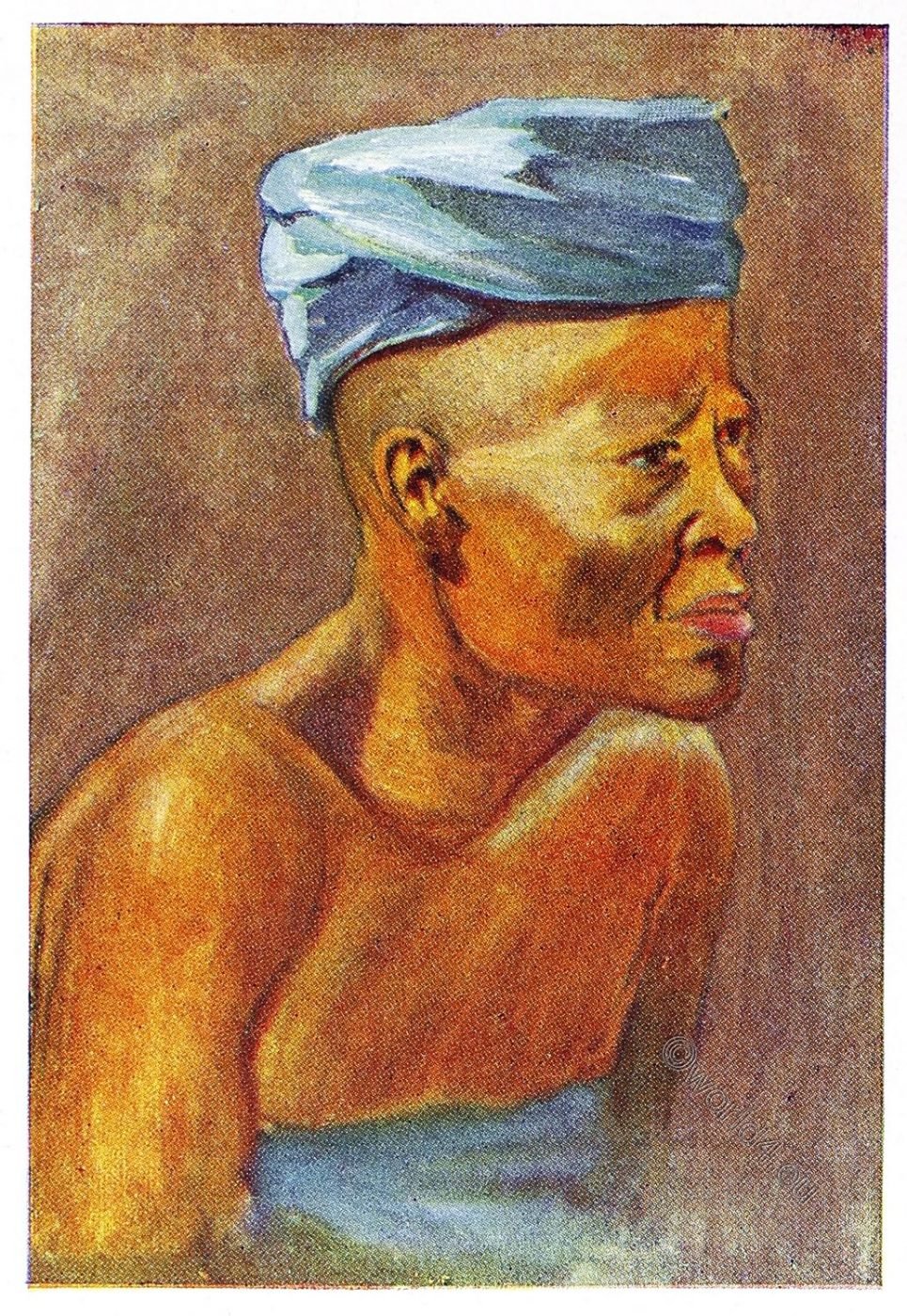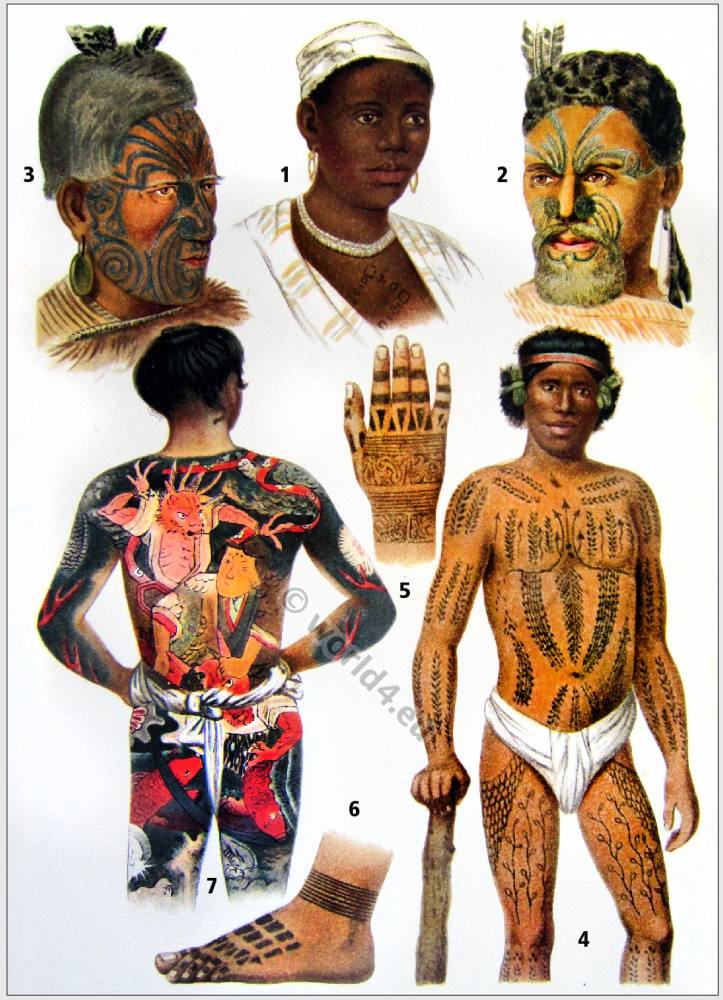
Woman from the Nupe people, traditionally called the Tapa, around 1878.
Nupe (also called Nufe or Nyfe) was once a tributary empire to the Sultan of Gwandu, in central Niger, between the 8th and 10th northern latitude with about 21,310 km². The official language was the Nupe, a nupoid language.
It was inhabited by the ethnicity of the Nupe, who supposedly had immigrated from Egypt around the 15th century. The Nupe, whose number is estimated at about half a million, are mostly Muslims.




Above: Sudanese Types (from oil and water color sketches by Carl Arriens). Woman of Ifé. Nupe Woman. Tuareg of Aspen. Gober Man. Source: The voice of Africa; being an account of the travels of the German Inner African Exploration Expedition in the years 1910-1912 by Leo Frobenius, E. Russell. London : Hutchinson & Co. 1913
The former settlement area is now the territory of the West African state of Nigeria. It is roughly the same as Nigeria’s state of Nigeria with an extension to the north. The former capital Bida is located in a plain between Niger and Kaduna. Other important cities are Rabba and Saraki.
Many Nupe still carry tribal signs in the form of scars on the face, although this tradition is dwindling more and more. The Nupe were described in detail by the ethnographer Siegfried Nadel, whose book, Black Byzantium, remains an anthropological classic.
Source:
- “Nouvelle Géographie universelle. La terre et les hommes”. The Earth and its Inhabitants. The European section of the Universal Geography by E. Reclus. Edited by E. G. Ravenstein. Author: Élisée Reclus. Contributor: Ernst Georg Ravenstein. Published: London 1878.
- Folk Stories from Southern Nigeria, West Africa, by Elphinstone Dayrell
Related
Discover more from World4 Costume Culture History
Subscribe to get the latest posts sent to your email.







